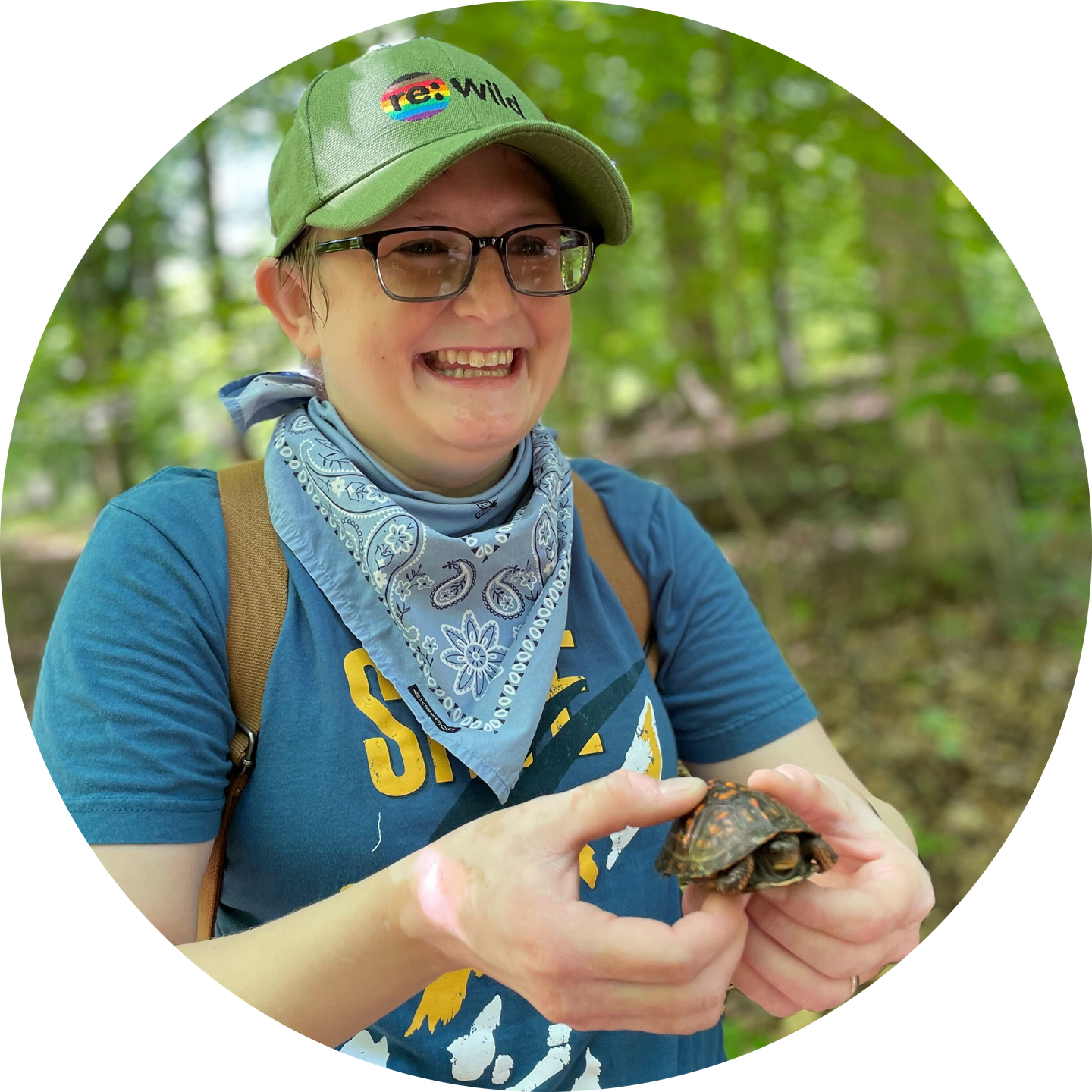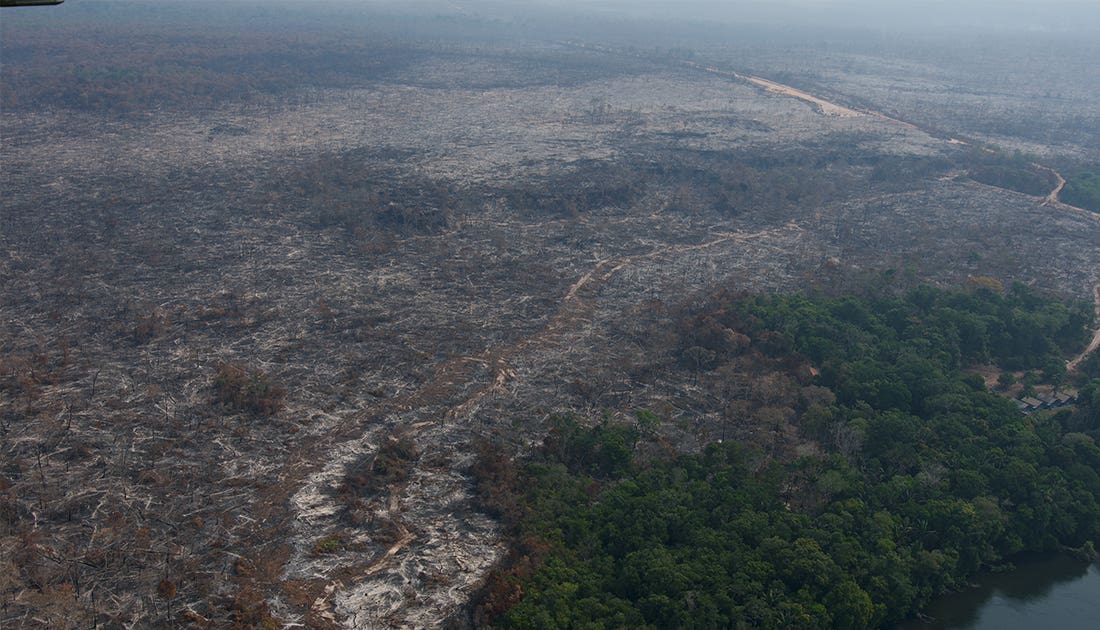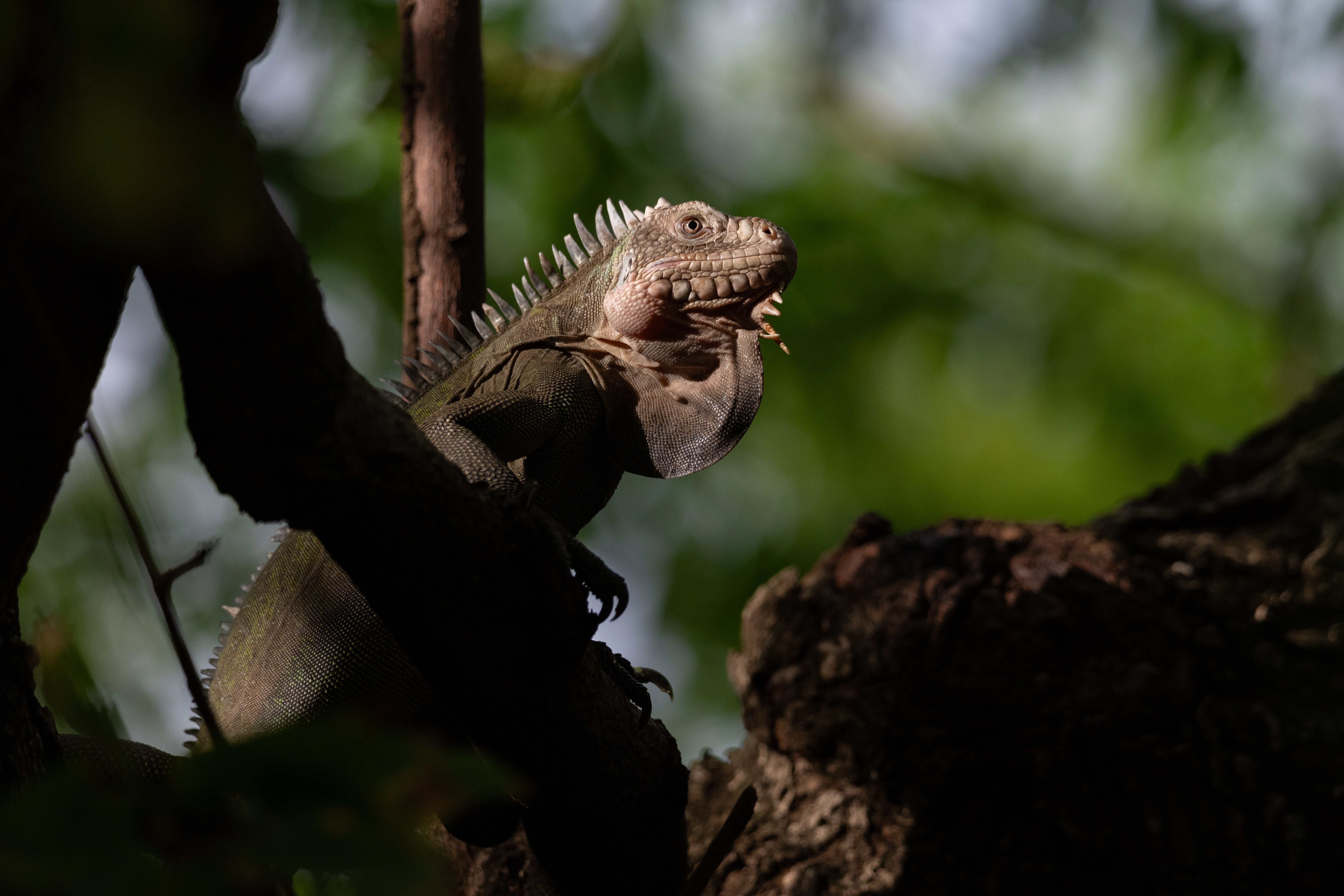For immediate release September 22, 2022
At least 2.2 million acres (900,000 hectares) of pristine rainforest have burned in the Amazon’s last frontier over the past year, including 50,000 acres (20,000 hectares) that are currently burning in two protected areas that have historically been immune to fire. In the midst of one of the worst years on record for fires in the Amazon Rainforest this century—and just a few weeks ahead of a critical presidential election—the fires show no signs of letting up.
On the southern edge of the Brazilian Amazon, where the forest meets agricultural production, there is increasing pressure on the forest. This region is known as the ‘arc of deforestation.’ So far this year, this region has been one of the most affected by fire, including in protected areas, forests that are not yet designated for protection but have a high level of biodiversity, and in Indigenous lands. Two protected areas in this region, Cristalino II State Park and the São Benedito and Azul Rivers Wildlife Refuge have already lost 10% of their forests to fire.
“What we are witnessing is the end of the Amazon,” said Angela Kuczach, director of Rede Pro UC - National Network for Protected Areas, an NGO that works on the defense and strengthening of Brazilian protected areas, who is currently visiting the southern region of the Brazilian Amazon to witness the fires and document their devastating effects. “Right here in the heart of the southern Amazon, we are exchanging forest for desert, and biodiversity for ashes. We can no longer say we’re going to lose the Amazon in 20 or 30 years; we are losing it right now.”
The southern region of the Brazilian Amazon is one of the most biodiverse places on the planet. It is home to about 600 species of birds out of the approximately 850 known bird species that live in the entire Brazilian Amazon. Twenty-five of the bird species in the region are endangered, such as the harpy eagle, the largest eagle in the world. There are more than 60 species of amphibians that live here, 82 reptiles, and 39 fish species. The region helps regulate rainfall in south-central Brazil via “flying rivers,” which send evaporated tropical water to the neighboring region with a helpful push from the wind.
Yet the southern region is under assault as the last frontier between a rapidly expanding and land-hungry agricultural sector, and the largest rainforest on the planet. This includes areas like the Karipuna Indigenous territory, which has lost 11,000 of its 153,000 hectares of forest to fire resulting from land grabs.
In the last two months, two protected areas in this region—the São Benedito and Azul Rivers Wildlife Refuge and the Cristalino II State Park—have been the target of deforestation and arson and have so far been particularly hard hit by fires that are still burning. Together they make up 500,000 acres (200,000 hectares). Although the São Benedito and Azul Rivers Wildlife Refuge and the Cristalino II State Park first experienced fires two years ago, these are the first documented fires for Cristalino II State Park, which is the only home of the white-cheeked spider monkey.
The state park has been the center of a court case that has opened it up to deforestation that leads to a drier microclimate and these kinds of forest fires. Earlier this year, the Brazilian Superior Court of Justice reversed the park’s protected status in a technicality, siding with a company that had previously been sued for deforestation in the park’s boundary.
“Immediately after this decision, deforestation and then fire started in the park, without any kind of action by the authorities to prevent or combat it,” Kuczach said. “The court’s decision has left this unique area of the planet at the mercy of land grabbing and destruction. Deforestation is advancing ferociously in one of the most important places for biodiversity in all of the Amazon, and we’re not seeing the political will at the state or national levels to stop it.”
The biggest threat to the Brazilian Amazon is deforestation by the cattle industry, both for pastures and feed crops (primarily soybeans), which has been linked to over 80% of deforestation in Amazonia. Illegal logging, dams, and mining are also major threats in Brazil and, like with the cattle industry, happen in many places with impunity.
Although no other country has more primary rainforest than Brazil, the country also leads the world in forest loss and this year is no different. The first week of September saw more fires in the Brazilian Amazon (18,374) than in the entire month of September in 2021 (16,742), according to Brazil’s National Institute for Space Research (INPE). And according to researchers at the most recent meeting of the Brazilian Society for the Advancement of Science last month, the temperature of the Amazon rose 1 degree Celsius in the last decade and saw rainfall decrease by 36% in some regions.
At the end of August, Re:wild joined Rede Pro UC, Menos1Lixo, Global Citizen and the Center for Environmental Peacebuilding in calling on all 12 presidential candidates to publicly commit to ending deforestation, in addition to implementing an emissions reduction plan in line with the Paris Agreement, respecting Indigenous peoples’ rights and land, and strengthening the system of protected areas. Brazilians will vote on October 2.
“In just a few weeks, Brazilian voters have a chance to help ensure the future of the Amazon, one free from deforestation and from the kind of heart-breaking devastation we are seeing across the southern region today,” said Rodrigo Medeiros, Re:wild senior Brazil associate. “I have every faith that Brazilians will vote to protect and restore their natural heritage, which they understand is critical not only to their health and wellbeing, but to that of all life on Earth.”
Global citizens around the world can support Brazilians by signing a petition asking the presidential candidates to make these commitments.
Brazil is one of eight countries (plus the overseas territory of French Guiana) that houses the Amazon Rainforest, a vast region called Amazonia. Amazonia is one of the world’s five designated High-biodiversity Wilderness Areas and home to millions of wildlife species, many of which haven’t yet been discovered or described.
It is also critically important to the estimated 20 million Indigenous peoples from more than 350 Indigenous groups that depend on natural ecosystems and resources for their livelihoods and cultures. Amazonia stores up to 140 billion tons of carbon and plays a critical role in water cycles, weather patterns and climate regulation.
Additional quotes
Kleber Karipuna, executive coordinator of the Brazilian Amazon Indigeneous Organizations Coordination and the Brazil’s Indigenous People Articulation “For us Indigenous peoples, the importance of Indigenous territories should not only be a struggle of peoples, but a struggle of humanity, due to the importance that our territories play in protecting the planet's biodiversity and for our livelihoods. That's why the fight for the protection of the Amazon is also significant for us, because it contains a great biodiversity that is so important for us indigenous peoples and for everyone. Protecting the Amazon for us is fundamental for everyone's human survival.”
Max Almeida, Project Manager Brazil, Center for Environmental Peacebuilding “Brazil has an incredible opportunity to lead on climate issues on the planet. It is essential that their leaders recognize this role, take a step forward in climate discussions and commit to climate goals capable of meeting those set forward in the Paris Agreement.”
Fe Cortez, activista, communicator and founder of Menos1Lixo “Brazilians have a major part to play now: vote on the survival of our species! It is critical that the next president of the land with the highest biodiversity on Earth understands that this is our largest wealth and commits to preserve our forests and the rights of Indigenous peoples. That’s why this election is so important and we, as citizens, can make history and put Brazil where it belongs: leading the conservation and bioeconomy movement on the planet.”
# # #
Re:wild Re:wild protects and restores the wild. We have a singular and powerful focus: the wild as the most effective solution to the interconnected climate, biodiversity and human wellbeing crises. Founded by a group of renowned conservation scientists together with Leonardo DiCaprio, Re:wild is a force multiplier that brings together Indigenous peoples, local communities, influential leaders, nongovernmental organizations, governments, companies and the public to protect and rewild at the scale and speed we need. Learn more at rewild.org.
Rede Pro UC - National Network for Protected Areas Rede Pro UC is a high-impact organization that works to defend and strengthen the system of protected areas in Brazil. The work of the institution takes place on the front lines, both through legal defense, advocacy, and social mobilization. To expand its activities, it establishes a network of national and international partners, and together with them creates strategies for defense and for the expansion of protected areas, monitoring, denouncing, defending, and acting together with decision-makers so that these areas continue to exist throughout the Brazilian territory. The Pro UC Network believes that protected areas may be the greatest legacy of our time for future generations, and that Brazil has a strategic position in this scenario, due to our megabiodiversity. Everything that is done here in favor of nature can have a high impact on the entire planet.
Contact Lindsay Renick Mayer Re:wild lrenickmayer@rewild.org 512-686-6225
Devin Murphy Re:wild dmurphy@rewild.org 512-686-6188
Fabiani Matos Rede Pro UC contato@redeprouc.org.br +55 41 99643-3650
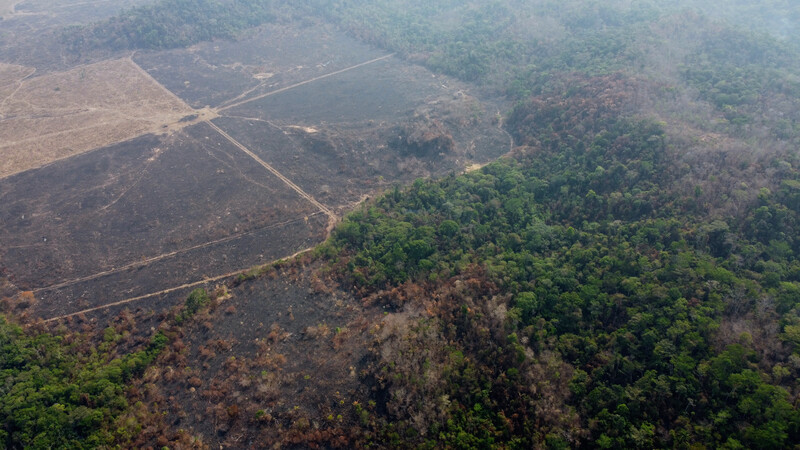


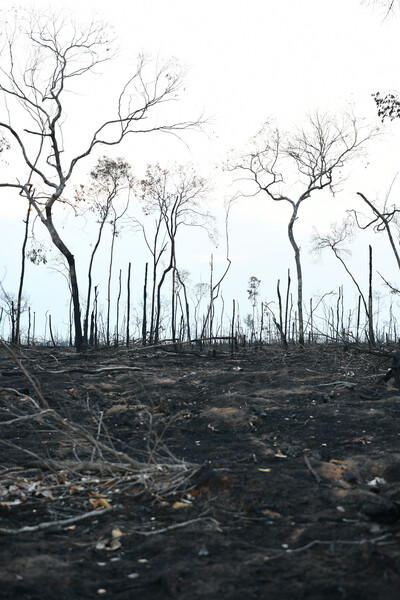
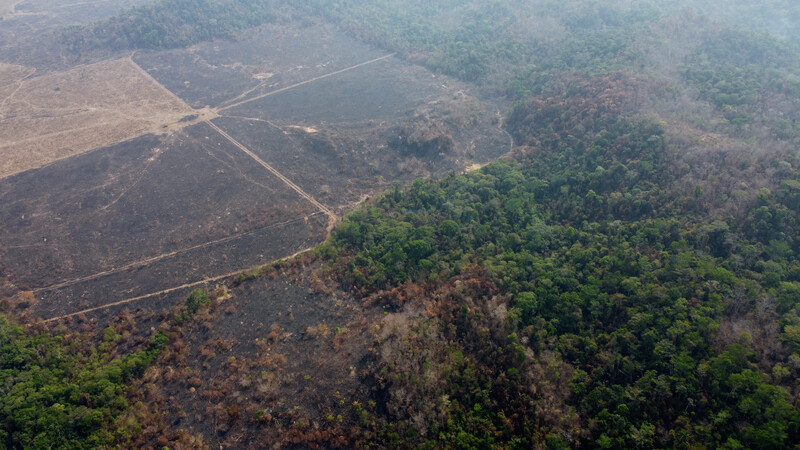

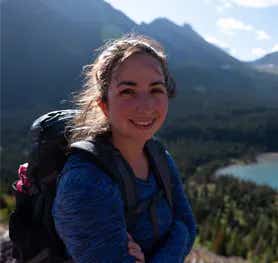
Devin Murphy
Writer
Devin Murphy is Re:wilds’s senior communications specialist and helps Re:wild and its partners tell stories about the work they do to protect wildlife and wildlands around the planet. Her favorite stories about conservation include fascinating and little-known species and the dedicated humans protecting them.
